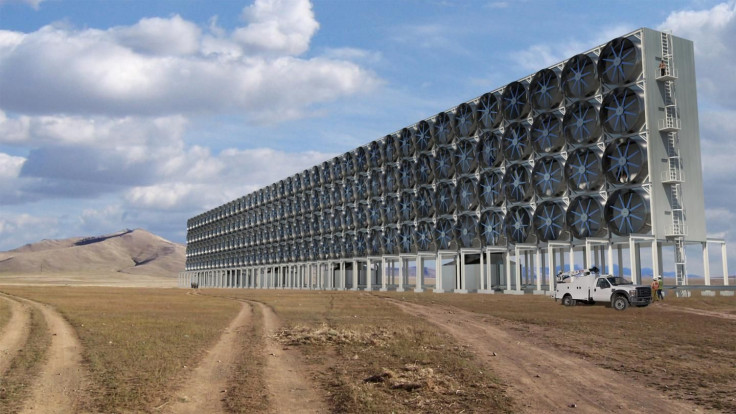This Technology Can Suck Carbon Dioxide From Air, Transform It Into Fuel

Carbon dioxide is one of the biggest contributors to global warming. The gas traps intense solar heat into our atmosphere and drives the pressing concern of climate change, something that can have a devastating effect not only on human life but also on flora and fauna on our planet. It is produced from human respiration, but a major chunk of it also comes from the burning of fossil fuels.
Just a little over a month ago, the concentration of CO2 touched a record high, with a whopping 410 particles per million. But, what if we say there is a way to reverse the process by capturing the gas straight out of the sky and converting it into low carbon fuel?
Previous researches have shown that the idea is plausible but costly, however, in the latest work, a group of researchers from Canadian firm Carbon Engineering has demonstrated that it can be executed in a scalable and cost-effective manner.
The work revolves around a technology called direct air capture wherein multiple giant fans are used to draw ambient air and bring it in contact with an aqueous solution design to pick and trap carbon dioxide. Once that’s done, heating and a bunch of other chemical reactions are used to re-extract the gas and employ it as a carbon source for the generation of valuable fuels such as gasoline, diesel or jet fuel.
"The carbon dioxide generated via direct air capture can be combined with sequestration for carbon removal, or it can enable the production of carbon-neutral hydrocarbons, which is a way to take low-cost carbon-free power sources like solar or wind and channel them into fuels that can be used to decarbonize the transportation sector," David Keith, founder and chief scientist of Carbon Engineering, said in a statement.
As the team suggested, the resulting low carbon fuel would be compatible with existing fuel distribution and transportation infrastructure. Meaning, it would reduce the carbon footprint of transportation without affecting the existing vehicles on road. Keith and colleagues have established a pilot plant at Carbon Engineering’s facility in British Columbia where the greenhouse gas is already being captured and transformed into fuel successfully.
While previous theories indicated that performing this task on an impactful scale would come to around $1,000 per ton of the gas captured, according to the estimates from Keith and team, it would cost just around $94 to $232 per ton.
"After 100 person-years of practical engineering and cost analysis, we can confidently say that while air capture is not some magical cheap solution, it is a viable and buildable technology for producing carbon-neutral fuels in the immediate future and for removing carbon in the long run," Keith concluded.
Their work, titled “A Process for Capturing CO2 from the Atmosphere,” was detailed June 7 in the journal Joule.
© Copyright IBTimes 2024. All rights reserved.





















